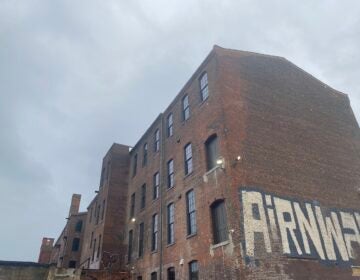Keystone Crossroads: The federal rule holding back neighborhood-scale mixed-use buildings

A new paper from the Regional Plan Association, “The Unintended Consequences of Housing Finance,” sheds some light on the ways federal financing rules discriminate against mixed-use infill development at a time when more Americans are voting with their feet for compact cities and older downtowns. Developers often allude to financing issues as a reason for requesting zoning variances for more height and density, but the particulars aren’t always well-understood by the public.
The issue is this: in the name of limiting their exposure to risk, federal lenders like the Department of Housing and Urban Development (HUD), the Federal Housing Administration (FHA), and government-sponsored enterprises (GSEs) like Fannie Mae and Freddie Mac all place regulatory limits on the amount of non-residential space a building can have, as a condition for receiving federal financing or federal loan guarantees. Compounding the problem, the federal standards also influence the private lending standards at private financial institutions.
To qualify for federal financing, developers need to keep the amount of commercial space, or the amount of revenue from commercial space, below a certain percentage — between 10-25 percent, depending on the lender.
The report’s authors argue that these caps are set too low for neighborhood-scale commercial buildings to qualify, “effectively disallowing most buildings with less than five stories and in some cases making even seven-story buildings non-compliant.”
“By capping the amount of commercial development permitted in federally-backed mortgages and programs,” they write, “the rules make it hard to finance construction or renovation of three-to-four story buildings in many mixed-use, walkable neighborhoods.”
The criteria many private lenders use for assessing risk is based on the feds’ criteria, the report explains, so many projects not seeking federal financing or loan guarantees are indirectly affected. One reason private banks do this is because loans for relatively straightforward developments like single-family homes can more easily be securitized and resold on the secondary market. By contrast, mixed-use infill or redevelopment projects are rarely so cookie-cutter, and remain parked on banks’ balance sheets as “non-conforming” loans.
From the report:
“Developers believe there is a “lack of understanding within the financial community” when it comes to financing mixed-use projects. Developers have a difficult time explaining why their non-conforming project is a good investment, even when it has been demonstrated time and again that these types of developments are in high demand. As major banks often won’t make the loans, a tenacious developer might find financing with a smaller, community bank. In practice these projects would be good investments, but require time and openness from the lender, and an interest in supporting the local community. Yet as there is no secondary market for mixed use loans, they are held on the bank’s balance sheets, keeping the bank from “reusing” the funds for other loans and collecting more fees. Including these opportunity costs, the loans are notably more expensive for the bank, and thus expensive to the developer.”
The Regional Plan Association (RPA) report argues that the current federal standards provide an unintended shot in the arm for a range of damaging trends, many of which the federal government is at least nominally committed to reversing. By tilting the market so far toward single-family homes (the recipient of 81 percent of federal financing,) government lending standards discourage investment in older urban areas and distressed communities, reinforce clusters of poverty, and promote auto-oriented land use patterns that increase driving and energy use while reducing physical activity.
To dig into the full story and learn what changes RPA recommends, head over to Keystone Crossroads.
WHYY is your source for fact-based, in-depth journalism and information. As a nonprofit organization, we rely on financial support from readers like you. Please give today.






